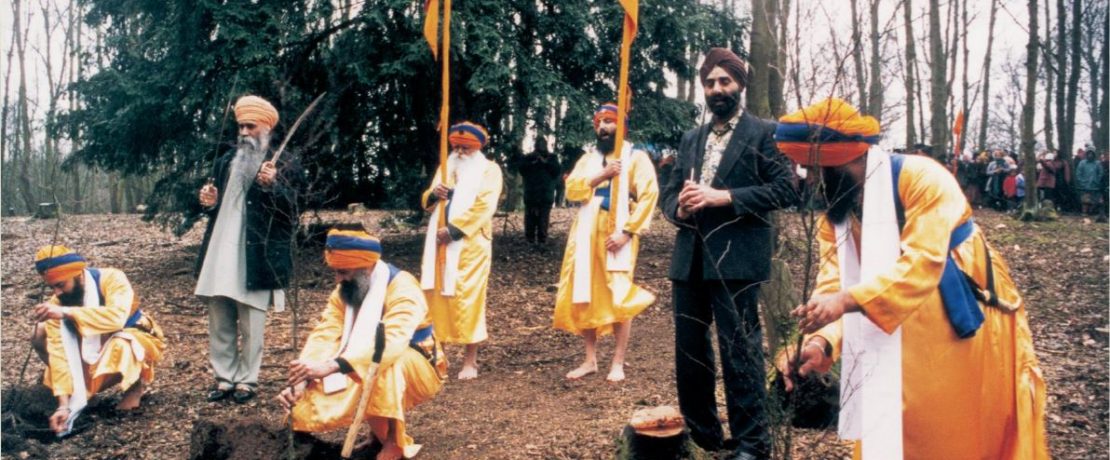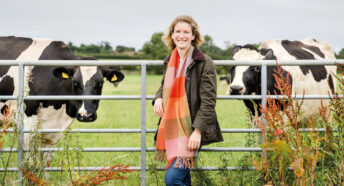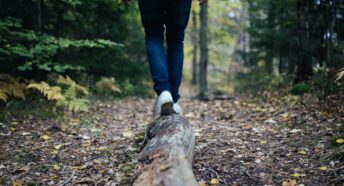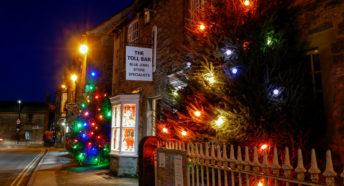Marking a place with memory
Judy Ling Wong CBE, honorary president of the Black Environment Network (BEN), was deservedly included in the BBC Woman’s Hour 2020 Power List for environmental achievement. Here, she tells CPRE about some of the groups BEN has helped achieve a sense of belonging in the UK countryside.
Within all of our lives, marking a place with memory is something that we all do naturally every day. What we do builds up layers of memory through which places and landscapes are associated with meaning. Over time, we construct a sense of belonging, if the experiences in our environment are positive.
New arrivals come to the UK for a whole spectrum of reasons, from escaping war and conflict to a desire to better their lives in some way. In doing so, they are uprooted from everything that held meaning for them in their surroundings. Offering activities that enable the process of marking a place positively with memory can facilitate a crucial sense of belonging that is fundamental to social integration and a better quality of life.
Here I share three stories that gave rise to the concept of ‘marking a place with memory’, through purposeful activities that made a real difference to the lives of those involved.
A natural memorial in Scotland
Black Environment Network developed its very first project with asylum seekers and refugees, working with the British Refugee Council in Scotland. We offered a range of enjoyable activities with the aim of providing some relief in the exceedingly stressed lives of displaced people; from fun workshops (including making hats out of leaves of amazing colours, size and form left from the trimmings of the Royal Botanic Garden Edinburgh) to picnics on the shores of Loch Lomond.
After some months, a member of the group, that we had come to know well, said to us: ‘You have done so much for us. We all feel we would like to give something back. Is there something we can do for nature?’ Instead of immediately latching onto getting more volunteers and slotting them in to do some work, we systematically introduced them to observing the range of things that needed doing and took time to explain their impact on nature, to deepen their understanding of and relationship with their surroundings.
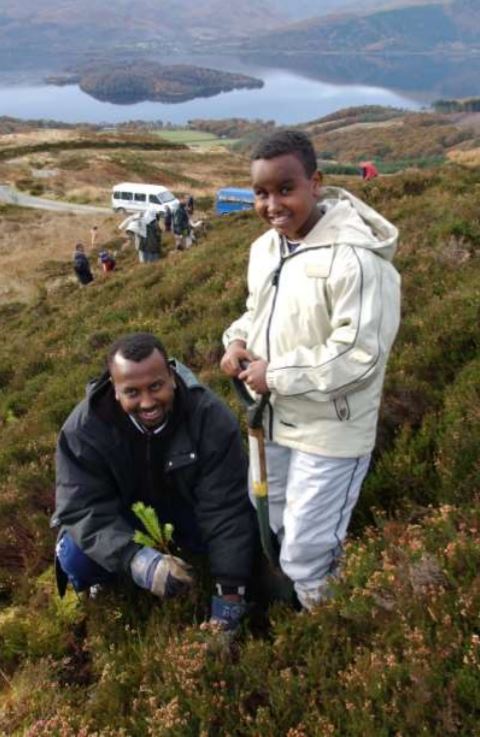
After a while, they came to us with an inspired idea. They wanted to plant trees, with each tree commemorating someone that had died or someone they had to leave behind. To do this, they each designed their own ceremony. Some of these ceremonies were personal, some cultural and some religious. Everyone witnessed each other’s offerings on what turned out to be a revelatory and emotional sharing of the personal consequences of war and conflict in our contemporary world. It was only on looking back that we recognised that the group of trees planted on that day is a war memorial.
An Independence Day party in Hainault Forest
Black Environment Network was asked to help engage and stimulate local multicultural communities to make use of and enjoy Hainault Forest. We ran an event that showed examples of what multicultural groups had done in the environmental sector across the UK.
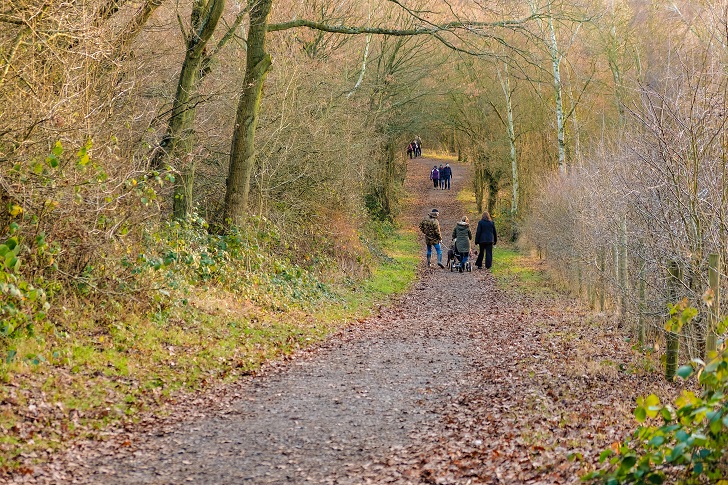
We showed images of South Asian youngsters canoeing on the lake in a National Park; Afro-Caribbean grandmothers sitting beneath trees telling traditional stories in the countryside; young Muslim women learning woodcraft or sharing basket weaving skills in Wales; and whole local communities creating huge wildflower meadows alongside social housing in Liverpool with the National Wildflower Center.
This was followed by a brainstorming session, in which we asserted it was all about abandoning practicalities and dreaming up things to do as a starting point. One excited youngster really took this on and said: ‘I dream of flying into Hainault Forest’. At this point the warden stood up and replied: ‘Yes you can fly to Hainault Forest! There is a field for paragliding folk to land right alongside our forest.’ After that ideas just flew around. One of these was a question to the ranger: ‘Can we celebrate Congo Independence Day in the forest?’ The answer was ‘yes’, and a great day was had by all, with much singing and dancing.
Commemorating Sikh scriptures in Nottingham
Quite early in our history, Black Environment Network worked closely with the local council and conservation charities in Nottingham. Some of the communities had become very experienced and dedicated to working for nature. The Sikh community approached us, asking for help to find them somewhere to plant 300 trees to commemorate the 300th anniversary of the birth of Khalsa, their sacred scriptures. They insisted that they must be native trees.
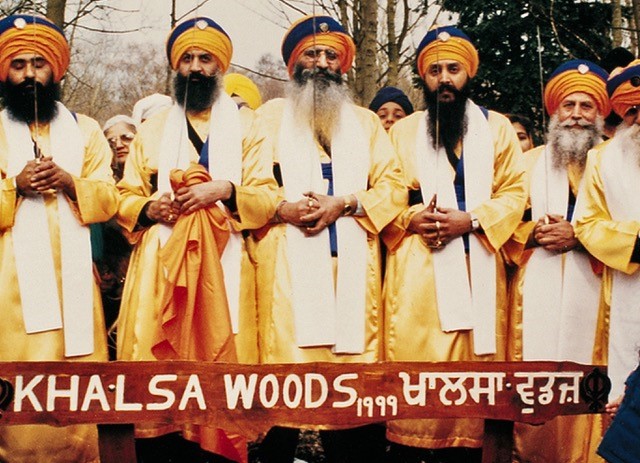
The council offered an area in Bestwood Country Park. The elders came in their magnificent traditional costumes on a moving and spiritually meaningful day. The trees have matured and if you visit the patch of woodland today, open to all, the only thing you see are trees and a little sign saying Khalsa Wood. But that patch of woodland is a very special place for the Sikh community, echoing with meaning.
Staking a claim on the landscape
Such activities, purposefully enabling the ‘marking of places with memory’, allow multicultural individuals and communities to claim a presence in the UK rural landscape. In the urban landscape, extensive pot gardens have been created from pavements to the concrete areas of council estates. There are special flowerbeds, totem poles or paths of mosaic with cultural motifs gracing small areas of green spaces and community gardens.
These gestures all form a continuity in the picture of multicultural presence, building relationships, enabling people to put down roots that merge the physical with emotional, cultural and spiritual dimensions. They align individual and community actions to create conscious meaning and memory set in nature, giving impetus to environmental actions.
Having first arrived in the UK in 1974, my own sense of belonging is enmeshed with layers of experiences right across the UK landscape. In particular, I have deep personal associations with the Cotswolds, and have claimed the landscape as mine by marking it with memory through the years.
Next time you’re out in a favourite part of the countryside, take the time to think about the richness of your own connections to it, and the many human interactions which continue to create our shared landscape heritage.
Judy Ling Wong is the founder of the Black Environment Network and is a leading voice on social inclusion policy in the environment.
Find out more about the 2020 Woman’s Hour Power List, celebrating 30 inspiring women whose work is making a significant positive contribution to the environment.
